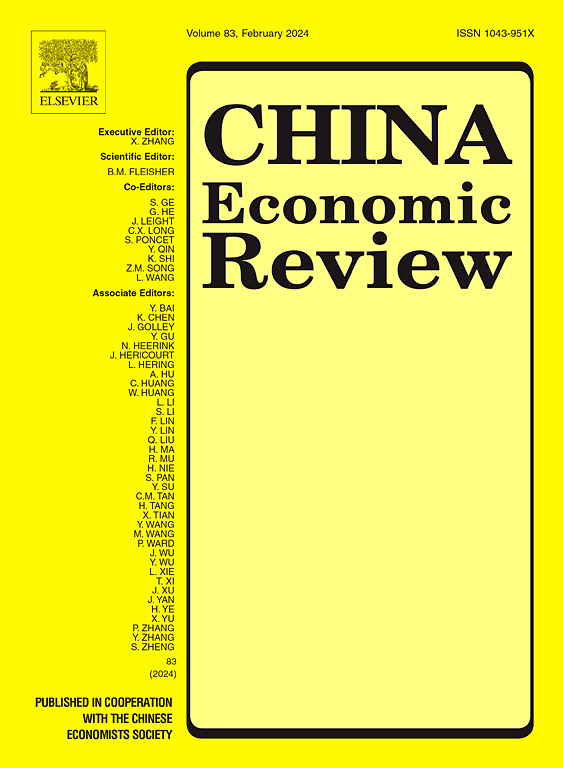贸易如何驱动中国宏观经济波动——多层次动态因素分析
IF 5.2
1区 经济学
Q1 ECONOMICS
引用次数: 0
摘要
调查不同地区和不同行业的国际贸易如何影响宏观经济,对于政策制定和经济预测至关重要,特别是在贸易摩擦的背景下。利用动态层次因子模型(DHFM)和因子增强向量自回归(FAVAR)模型,从大量贸易数据中提取因子,探讨其对宏观经济的影响及其与宏观经济的相互作用。我们的发现揭示了三个关键方面。首先,对整体贸易因素的积极冲击会产生积极的宏观经济效应,尽管存在显著的区域差异。经合组织因素引发了中美两国的通胀压力和货币紧缩,而东盟因素导致了政策分歧——中国选择放松货币政策,而美国选择收紧货币政策——并伴随着外国直接投资(FDI)流入和股市表现的改善。第二,在产业层面,尽管金融市场存在一些不确定性,但对中技术和高技术制造业的积极冲击显示出持续的工业增长和积极的FDI趋势。第三,在政策互动方面,我们发现美国货币政策紧缩冲击对中国贸易和宏观经济周期的影响显著,而中国货币政策紧缩冲击的影响相对模糊。本文章由计算机程序翻译,如有差异,请以英文原文为准。
How trade drives fluctuations in macroeconomics in China – A multi-level dynamic factor approach
Investigating how international trade with different regions and in different indus- tries affects the macroeconomy is crucial for policymaking and economic forecasting, particularly in the context of trade frictions. Using a dynamic hierarchical factor model (DHFM) and factor-augmented vector autoregression (FAVAR) model, we extract factors from extensive trade data to explore their impacts on and interactions with the macroeconomy.
Our findings reveal three key aspects. First, a positive shock to the overall trade factor generates positive macroeconomic effects, though with notable regional varia- tions. The OECD factor triggers inflationary pressures and monetary tightening in both China and the US, whereas the ASEAN factor leads to policy divergence—China opts for monetary easing against US tightening—accompanied by improved foreign direct investment (FDI) inflows and stock market performance. Second, in the in- dustry dimension, positive shocks to the medium-tech and high-tech manufacturing sector demonstrate sustained industrial growth and positive FDI trends, despite some financial market uncertainties. Third, regarding policy interactions, we find a contrac- tionary US monetary policy shock significantly impacts China's trade and macroeco- nomic cycles,whereas a contractionary Chinese monetary policy shock shows relatively ambiguous effects.
求助全文
通过发布文献求助,成功后即可免费获取论文全文。
去求助
来源期刊

中国经济评论
ECONOMICS-
CiteScore
10.60
自引率
4.40%
发文量
380
期刊介绍:
The China Economic Review publishes original works of scholarship which add to the knowledge of the economy of China and to economies as a discipline. We seek, in particular, papers dealing with policy, performance and institutional change. Empirical papers normally use a formal model, a data set, and standard statistical techniques. Submissions are subjected to double-blind peer review.
 求助内容:
求助内容: 应助结果提醒方式:
应助结果提醒方式:


